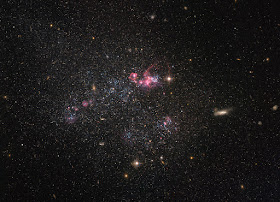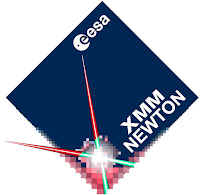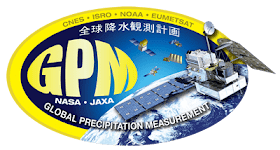CERN - European Organization for Nuclear Research logo.
April 1, 2016
Image above: Nanie Perrin (pictured) and her colleagues in the Theory Secretariat are the first port of call for those embarking on a stay in the Theory department. (Image: Sophia Bennett/ CERN).
A large tin holding dozens of keys sits in the office of the Theory Secretariat. Each one unlocks a stay on a Theory corridor. Nanie Perrin hands them out, and collects them back, in a constant game of musical chairs - or rather, musical offices. On the Secretariat's board (the only whiteboard in the corridor), departures are listed in red, arrivals in green.
One theoretician going away for a fortnight leaves his office to another, and so on. Several dozen new brains pass through the Secretariat's door each month, arriving for visits that last a day, a month or several years. They come to attend seminars and workshops, to begin contracts as post-doctoral students, fellows and staff members (although this is rarer), or simply to hold discussions with their colleagues.
The Secretariat is their haven, a place for information, lost property and lost theoreticians. The assistants, Nanie Perrin, Michelle Connor and Jeanne Rostant, help them to organise their meetings and seminars. Behind the scenes, Elena Gianolio provides IT support. Everything is arranged so that the theoreticians can focus exclusively on thinking, problem-solving, calculations, and writing.
"We have around 800 visitors a year," explains Nanie Perrin. "There are more during the summer, because many theoreticians have teaching jobs at universities and come to work at CERN during their holidays."
Travel is an integral part of a theoretician's life, racking up kilometres and time differences. 'I make about two intercontinental trips a year, plus six or so within Europe,' explains Wolfgang Lerche, a theoretician at CERN. 'Last year, I spent 300 hours on aeroplanes and travelled around 200,000 kilometres,' says his colleague Michelangelo Mangano.
Image above: The Secretariat have the keys, the information and the computers needed to ensure that the theoreticians can focus exclusively – well, almost - on their work. (Image: sophia Bennett/ CERN).
Experienced theoreticians travel primarily to give lessons and presentations, to attend conferences and to sit on thesis juries and boards.
In an age when MOOCs, Skype and video-conferences are everywhere, travelling to speak to students may seem as old-fashioned as writing on a blackboard in chalk. However, all theoreticians agree that actually meeting people is indispensable for their work.
"Skype is used more and more for collaborative work. But nothing can beat a meeting in person. If you meet a collaborator, you can talk for 10 hours in a row or more. There is no way you can do this electronically," says Michelangelo Mangano.
"It's human interaction that produces the spark. Exchanging ideas is essential in a discipline like ours, which is constantly evolving. Projects are often born out of impromptu discussions. We attend conferences not only to present our own work but also to develop new projects. Conferences are project incubators!" explains Christophe Grojean, a theoretician at the DESY laboratory and a former resident of CERN's Theory corridor.
"You have to be in the same room for ideas to sparkle," says Slava Rychkov, a theoretician at CERN. "The Simons Foundation, which funds a collaborative programme in mathematical and physical sciences, requires 25% of its budget to be spent on organising face-to-face meetings and conferences."

Image above: Michelangelo Mangano takes a break in his office. Behind him, a wall covered in his 'ultra-trailer' race numbers. Three or four times a year, he takes part in these extreme mountain races of 100 kilometres or more, sometimes with drops and climbs of 10,000 metres. It is the long plane journeys and the determination to master interminable calculations that have prepared him for these races, he explains. 'Running for hours with only myself for company doesn't bother me. I trained for it during all those flights when I was younger, spending as many as nine hours completely idle, with nothing to look at but the seat in front of me. We didn't have laptops or films to watch then.' (Image: Maximillien Brice/ CERN).
Gian Giudice, the head of CERN's Theory department, has established a daily meeting in the Theory corridor's small meeting room. During the afternoon coffee break, discussions thrive. It's a way of encouraging the scientists to tear themselves away from their solitary calculations and spend time with their colleagues. Working in theory is something of a paradox, at once solitary and collaborative, fostering both solidarity and competition.
While experimental physics brings scientists together around great instruments, such as the LHC and its experiments, theoretical physics requires only blackboards, chalk, computers and, of course, brains. And since scientific talent is rare but evenly distributed around the world, this small community is scattered and its members are obliged to travel constantly.
The geographical dispersion of the community is also a great asset. Firstly, it means that institutes develop their own specialities. For example, thanks to its closeness to the experiments, CERN is the kingdom of phenomenology. Phenomenology forms a bridge between the theoretical models and experimental physics. Phenomenologists will propose quantities that are measurable by the experiments, starting from the theoretical models, or, the other way round, reveal theoretical models starting from observations.
Image above: The Theory corridor welcomes hundreds of visitors each year, all of whom must be provided with offices. The strips of white paper stuck to this door act as name plates. There's no need to reprint them each time: when someone moves into the office, their name is slipped into the space provided, and when they leave, it is removed and stuck back on the door. (Image: Sophia Bennett/CERN).
Furthermore, different cultures inspire different ways of thinking. "We often underestimate how great an effect culture has on scientific thought," says Christophe Grojean. "Equations may be universal, but the way we understand them and combine them with other results is very personal."
While experienced physicists travel to spread their knowledge, young ones go from country to country to take up post-doctoral and temporary contracts. It takes them several years to get a permanent job. Their CVs make for dizzying reading.
"It's impossible to get a permanent job without working at several different institutes first," says Camille Bonvin, a fellow in CERN's Theory department. "I've worked at four institutes so far, and I'm going to another one in June. The job I’ll be taking up isn't permanent, so it's highly likely that I'll move again afterwards."
This lack of job security discourages many young graduates, who often end up leaving the field. Some go on to work in computing or finance, where their analytical abilities are highly valued.
"One famous, if atypical, example is Yuri Milner, who left particle physics for the financial world. He is now a billionaire and a science philanthropist. As he himself quipped: 'That I quit was a net gain for physics'" – Slava Rychov.
The instability of the first years is, however, seen as an essential part of the training. "In my opinion, it's very beneficial. Working at different institutes enables you to explore different environments and widen your fields of research and your interests," adds Camille Bonvin.
"All theoreticians have to go through it," says Gian Giudice. "It's essential, because moving is an enriching experience. You can’t spend all of your life in the same place and expect to make breakthroughs."
Image above: Camille Bonvin (back right), a fellow in CERN's Theory department, in her office, surrounded by other young theoreticians. Young theoreticians travel around from contract to contract before finding a permanent job. (Image: Sophia Bennett/ CERN).
"It's hard to judge young people right after their PhD. They have to get out from under the wing of their advisor, show independence and produce important results, then they are ready for a tenured job," explains Slava Rychkov.
The constant movement enables young physicists to build up a network of colleagues and, sometimes, to find a new direction for their research.
A life spent travelling from country to country may sound exhilarating, but combining it with a family life is difficult. Yet, it is precisely between the ages of 25 and 35 that theoreticians are busy proving themselves, constantly travelling from one institute to another.
"A certain talent is needed to juggle both science and personal life," says Slava Rychkov.
But many theoreticians manage to do just that. Their children grow up in several countries. "It's complicated sometimes, but it's beneficial for the whole family," explains Christophe Grojean, who has three children with another theoretician. Camille Bonvin, a young mother, hopes to succeed in this herself: "My thesis supervisor has a wonderful career and three fantastic children. She's a great example that proves that it’s possible."
The next article in the In Theory series will look at the differences between experimentalists and theorists, how they compete and how they collaborate . Read the previous articles here:
CERN - In Theory: Are theoreticians just football fanatics?
http://orbiterchspacenews.blogspot.ch/2016/03/cern-in-theory-are-theoreticians-just.htmlCERN - In theory: Welcome to the Theory corridor:
http://orbiterchspacenews.blogspot.ch/2016/02/cern-in-theory-welcome-to-theory.htmlCERN - In Theory: why bother with theoretical physics?:
http://orbiterchspacenews.blogspot.ch/2016/03/cern-in-theory-why-bother-with.htmlNote:
CERN, the European Organization for Nuclear Research, is one of the world’s largest and most respected centres for scientific research. Its business is fundamental physics, finding out what the Universe is made of and how it works. At CERN, the world’s largest and most complex scientific instruments are used to study the basic constituents of matter — the fundamental particles. By studying what happens when these particles collide, physicists learn about the laws of Nature.
The instruments used at CERN are particle accelerators and detectors. Accelerators boost beams of particles to high energies before they are made to collide with each other or with stationary targets. Detectors observe and record the results of these collisions.
Founded in 1954, the CERN Laboratory sits astride the Franco–Swiss border near Geneva. It was one of Europe’s first joint ventures and now has 22 Member States.
Large Hadron Collider (LHC):
http://home.cern/topics/large-hadron-colliderCERN's "Group of Theoretical Studies":
http://home.cern/cern-people/opinion/2014/10/theory-cern-turns-62For more information about the European Organization for Nuclear Research (CERN), visit:
http://home.web.cern.ch/Images (mentioned), Text, Credits: CERN/Corinne Pralavorio/Harriet Kim Jarlett.
Best regards, Orbiter.ch


















































